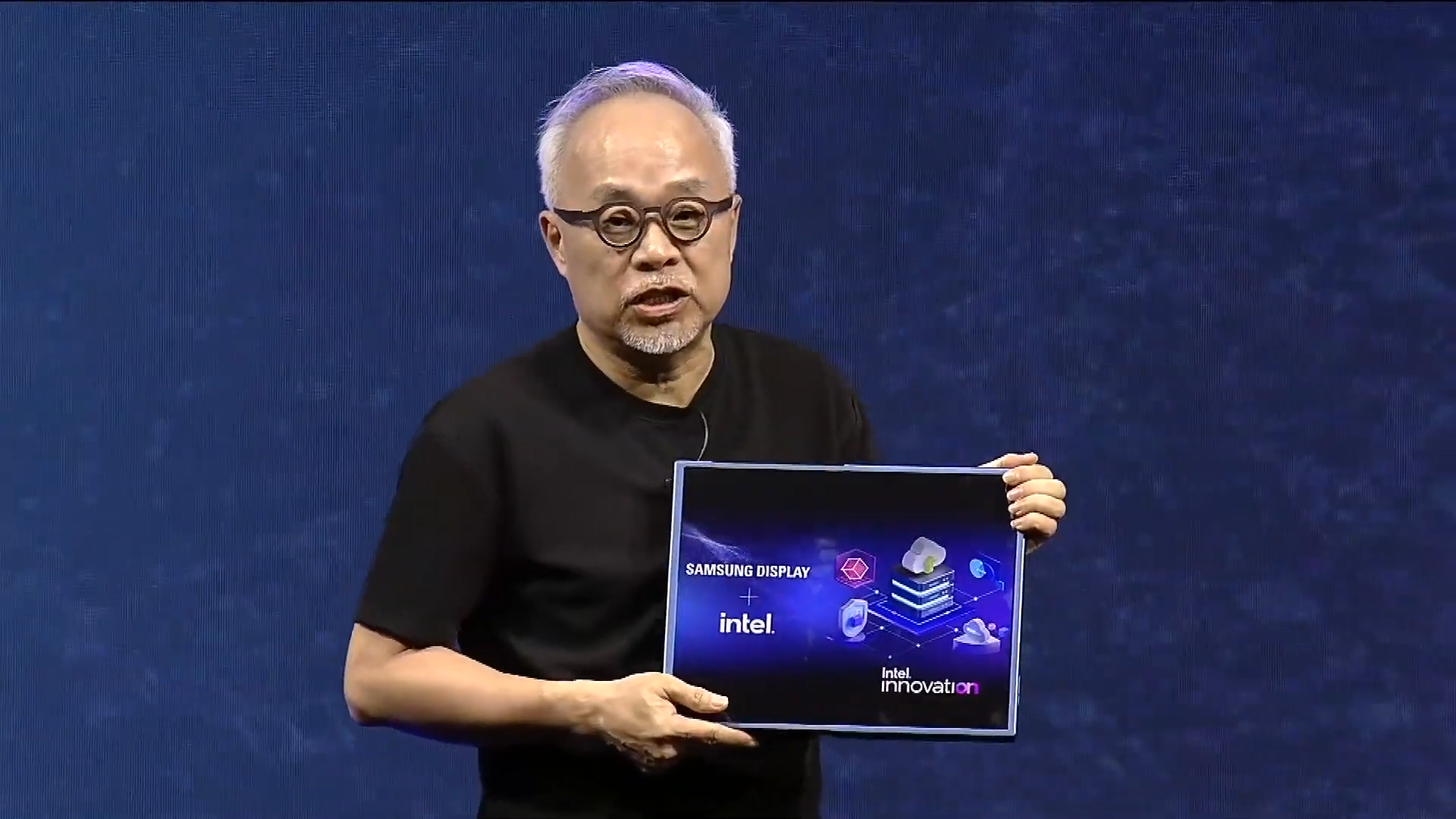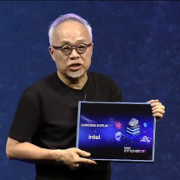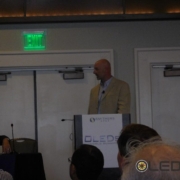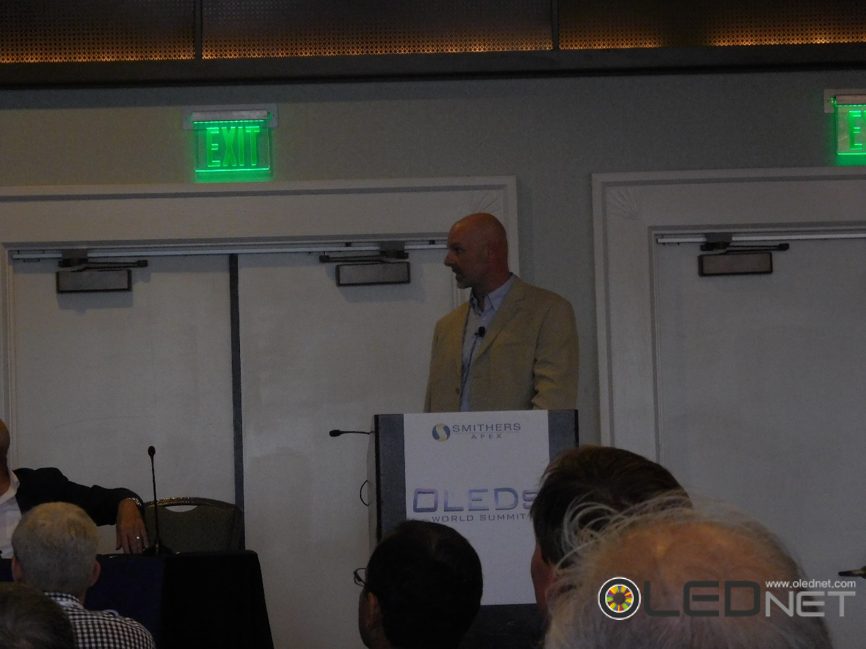Samsung Display’s first slidable display was introduced!

Choi Joo-sun, CEO of Samsung Display Introducing a Slidable Display.
Captured from Intel Newsroom Video
“Foldable is gone”
Samsung Display unveiled its 17-inch slidable display for the first time at the “Intel Innovation 2022” event held at the McEnery Convention Center in San Jose, California on September 27th.
When Intel CEO Pat Gelsinger announced Intel’s strategy for the user experience and said, “Let me introduce our Korean partner.” Samsung Display CEO Choi Joo-sun made a surprise appearance at the venue.
CEO Choi entered the stage and held a tablet PC-sized device in his left hand. “A few years ago, I saw this device and thought it was a good solution to the portability of a large monitor,” Pat Gelsinger said. CEO Choi added, “At the same time as demonstrating the demo version, we are here to prove that Samsung Display creates an innovative form factor through collaboration with ecosystem developers in software and hardware.”

Samsung Display’s 17-inch Slidable Display Before Expansion(Left) and After Expansion(Right). Captured from Intel Newsroom Video.
CEO Choi stated, “We sometimes need a big screen.” He went on to remark, “We will show you magic.” He then stretched the screen by pulling the slider display by hand. The 13-inch display screen has grown to 17 inches. It is a display for PCs that is applied with flexible OLED (organic light emitting diode). “Foldable is gone.” he declared and concluded that, “Slidable displays will meet the needs of large screens and portability.”
Gelsinger also introduced ‘Unison’, a software that can share information between smartphones and laptops using a slidable display. Unison supports both Android phones and iPhones.




